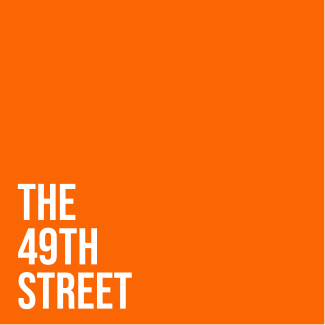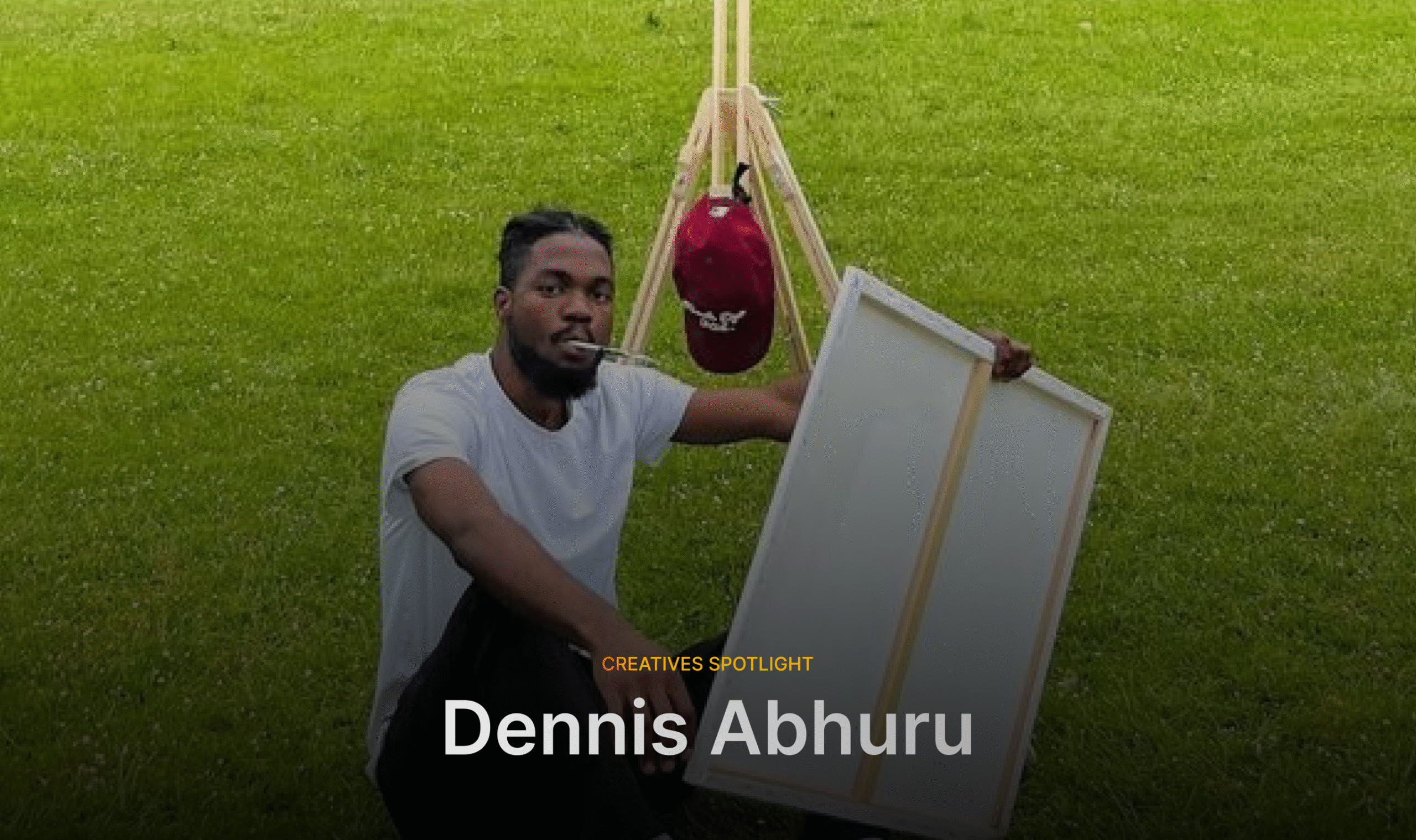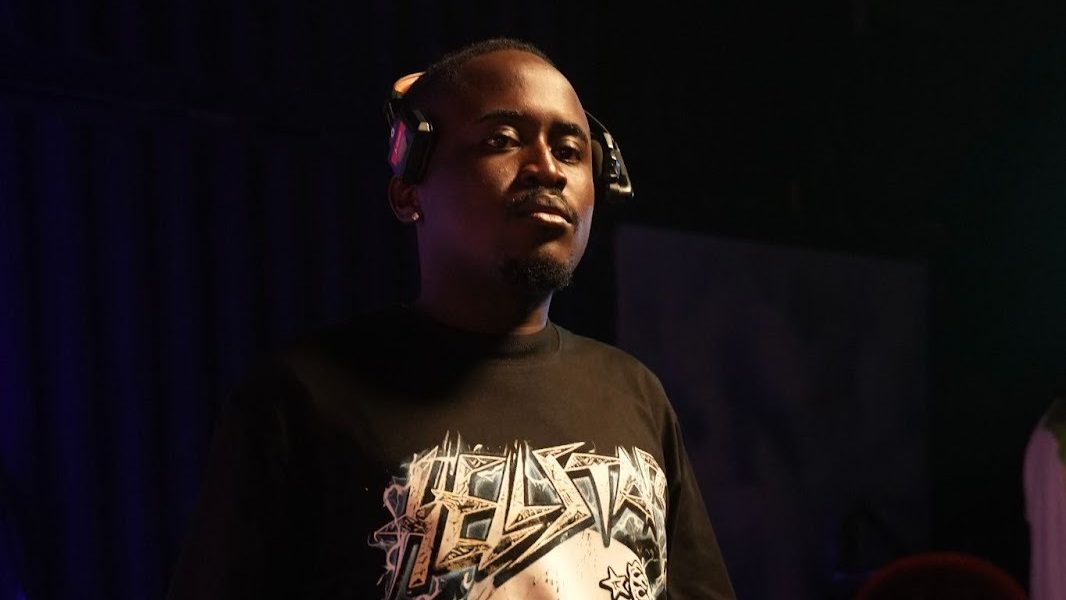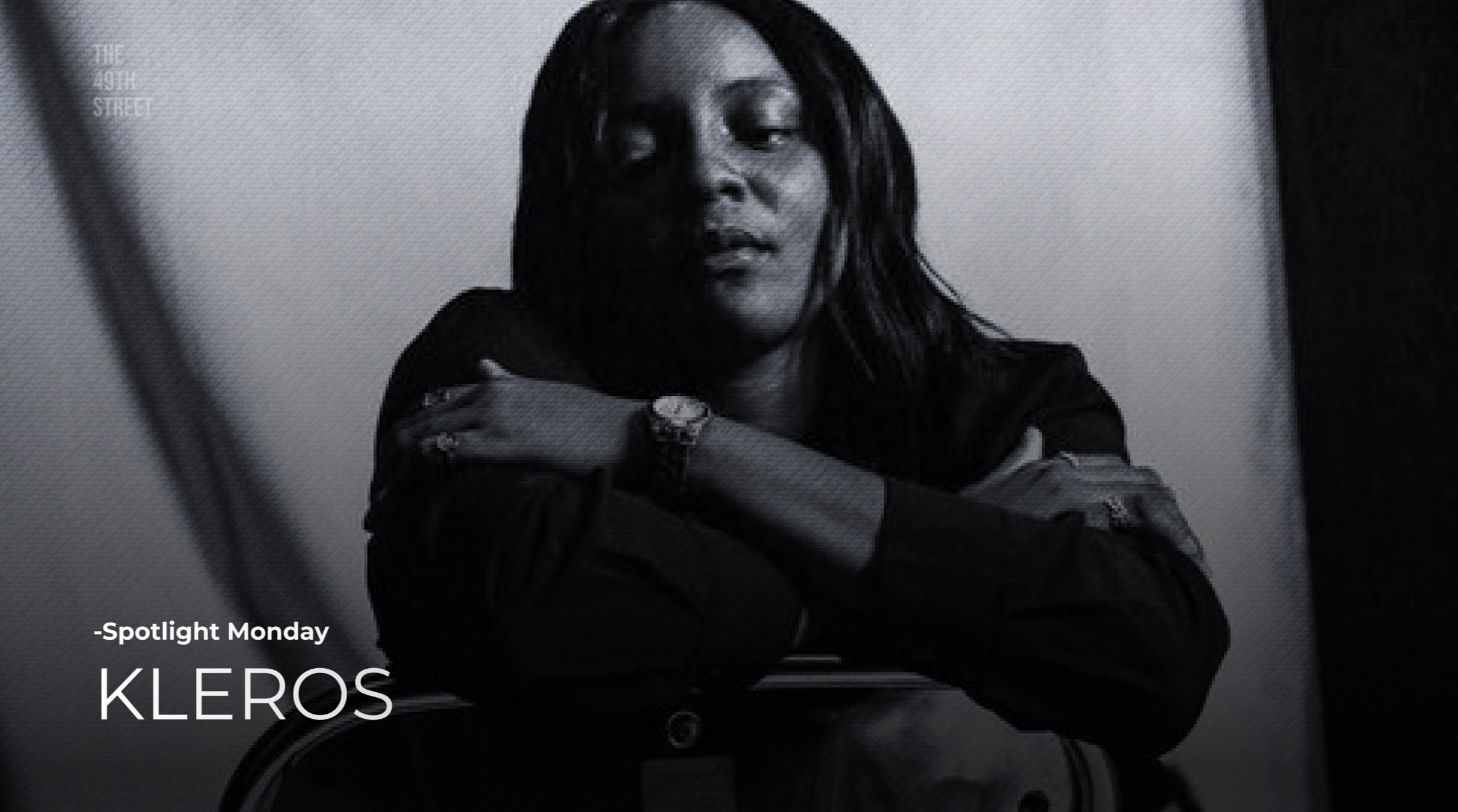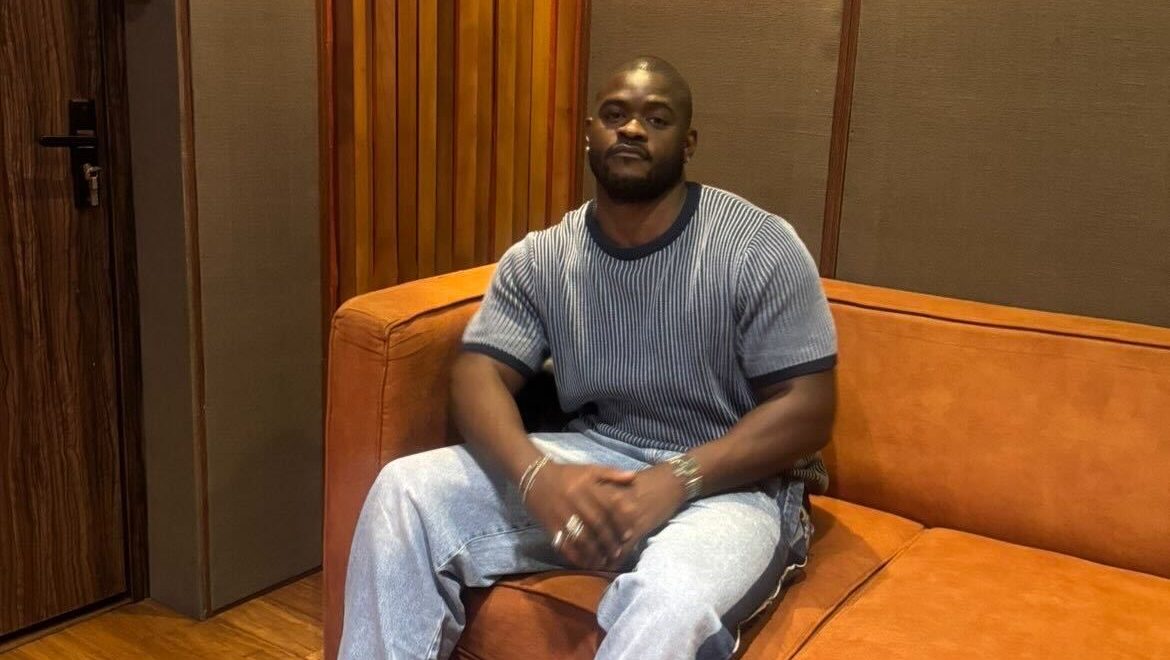By Olawunmi Aranmolate
Art as a tool for healing, advocacy, and storytelling sits at the heart of this conversation. In this interview, we spoke with Dennis Abhuru, a Nigerian visual artist whose work challenges exclusion, uplifts marginalized voices, and finds quiet power in imperfection. From his roots in Nigeria to his journey in the UK, Dennis Abhuru shares what drives him, the communities that inspire him, and the stories behind his bold, tender work.
Can you tell us a bit about yourself and what first inspired you to become a visual artist?
I’m a Nigerian visual artist currently based in the UK, deeply committed to using art as a tool for advocacy, healing, and storytelling. My journey into visual art began as a child. I was always sketching emotions and stories that felt too heavy for words. Over time, art became my sanctuary, a place where I could express pain, faith, and hope all at once. The true turning point came when I realized that my work could be more than personal, I mean, knowing it could give a voice to others, especially those who often go unheard.
What first drew you to explore themes of identity and social inclusion in your art, and how did your personal journey inform that focus?
Growing up in Nigeria and later relocating to the UK, I’ve witnessed both visible and invisible barriers, whether related to neurodiversity, socioeconomic status, or race. My own experiences with displacement, rebuilding identity, and even grief gave me a deep empathy for marginalized groups. I realized early on that art can break stereotypes and start conversations. So, inclusion became not just a theme, but a responsibility to reflect the dignity of those who are often overlooked.
You’ve done incredible work giving voice to people with autism and Down syndrome. Can you share a project or piece that you feel best captures that mission and the story behind it?
Thank you. Even though I feel like I haven’t started at all, lol! One piece that really captures this mission is a digital painting I created called “Tough.” It shows a child with tears in their eyes, but also a quiet strength. I left out the mouth on purpose to highlight how children, especially those with autism or Down syndrome, may not always speak, but can still express so much through their eyes.
The painting is about more than emotion. It’s a reminder that children, even when they can’t fully explain what they feel, still carry deep experiences and strength. Tough also calls attention to how our actions and decisions as adults affect the most vulnerable. It’s meant to make people pause, reflect, and treat every child with care, dignity, and respect.
Walk me through your typical process: how do you move from concept to finished piece? Are there particular materials or techniques you always return to?
I call my process a directionless one. Sometimes it starts with listening to people’s stories, societal tension, or something spiritual. Sometimes I see it in my dream and then wake up to draw or write down the idea. Many times, I’m influenced by the time I spend with my students in school. In terms of materials and technique, as a mixed media artist, I paint digitally and traditionally. Charcoal is a core part of my process; it allows me to map emotional tone through contrast and depth. I then layer with acrylics, most times, leaving the charcoal visible as a way to honor the raw and imperfect.
What’s been the biggest creative or logistical challenge you’ve faced when working on inclusion-focused art, and what did you learn from overcoming it?
The biggest challenge is representation, doing it right. There’s a fine line between advocacy and appropriation, and I’m always mindful of that. Creatively, it’s about balancing aesthetics with truth. Logistically, it’s gaining trust from the communities I portray, which takes time and genuine connection. I’ve learned that listening comes before painting—and that the best art is a collaboration of spirit, not just skill. Gladly, working within the SEN education system makes it easier for me to navigate creatively and logistically.
How have members of the communities you represent responded to your work? Any feedback or moments that really stuck with you?
Working as the art club coordinator at a special educational needs (SEN) school in London has been one of the most rewarding parts of my journey. The students there respond to art with such honesty and joy, it’s incredibly moving. During Art Market Day, some of the children proudly showcased their own creations, and seeing the excitement on their faces when others appreciated their work was unforgettable. I remember one student lit up when staff members and even parents bought her artworks. That moment reminded me that art can open doors where words sometimes fall short.
On Creative Day, we explored different materials and styles, and I saw how giving children the freedom to create without rules boosted their confidence. Their feedback isn’t always verbal, but it’s in their smiles, focus, and the way they keep coming back to create more. That’s the kind of response that stays with you; it just shows that the work is not just being seen but truly felt.
What upcoming projects or themes are you most excited about exploring next? Where do you see your practice evolving over the next year?
I’m currently exploring a mixed media series focused on “invisible strength,” depicting the resilience of children with neurodivergence and those who care for them. I also plan to develop a workshop series within SEN schools, helping the children create their own expressive portraits. Long term, I see my practice evolving into something more immersive, bringing together visual art, sound, and storytelling in both physical and digital spaces. I want to keep pushing the boundaries of how inclusion is felt, not just seen.
This conversation is a reminder that art doesn’t just reflect the world; it can reimagine it. Through his practice, Dennis Abhuru continues to create space for those too often left out of the frame. As his work evolves, one thing remains clear: inclusion isn’t a trend for him, it’s a lifelong commitment.
